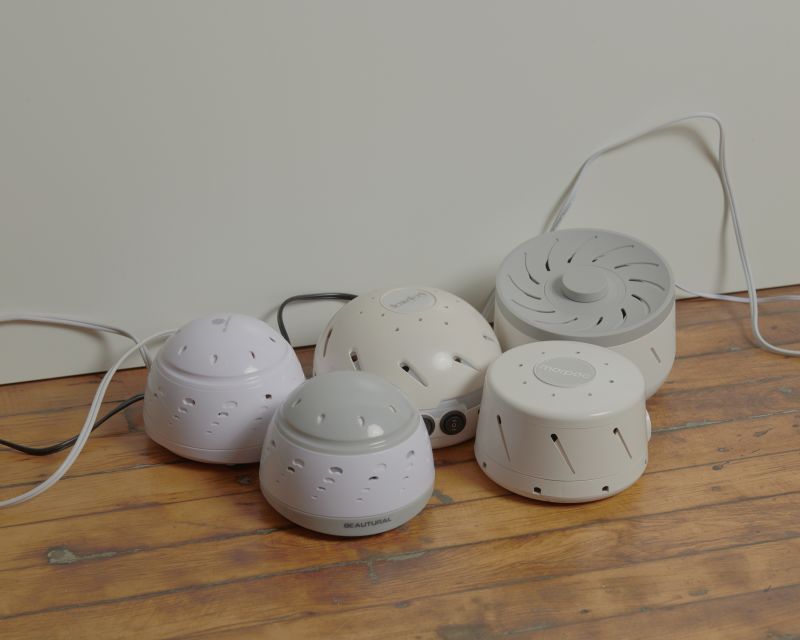
The unusual connection between cuteness and our commodities.
When fall arrived, like it does every year, I removed my air conditioner from my window. It was nice to save energy and electricity. Plus, I told myself, without the air conditioner taking up space, I had a better view of the vibrantly changing autumn leaves.
But something was missing. Come nightfall, I realized it was the sound—not the air—of my air conditioner that I missed most. While its main priority was keeping me cool over the summer, my air conditioner also had the added, and unnoticed, benefit of lulling me to sleep. The even humming sound, a byproduct of its whirring fan, masked the typical disruptive noises of the city: car honks, ambulance sirens, and spirited pedestrians.
It wasn’t long before I was up late, researching white noise machines online, hoping to select the right one to fill the uncomfortably silent void left by my air conditioner.
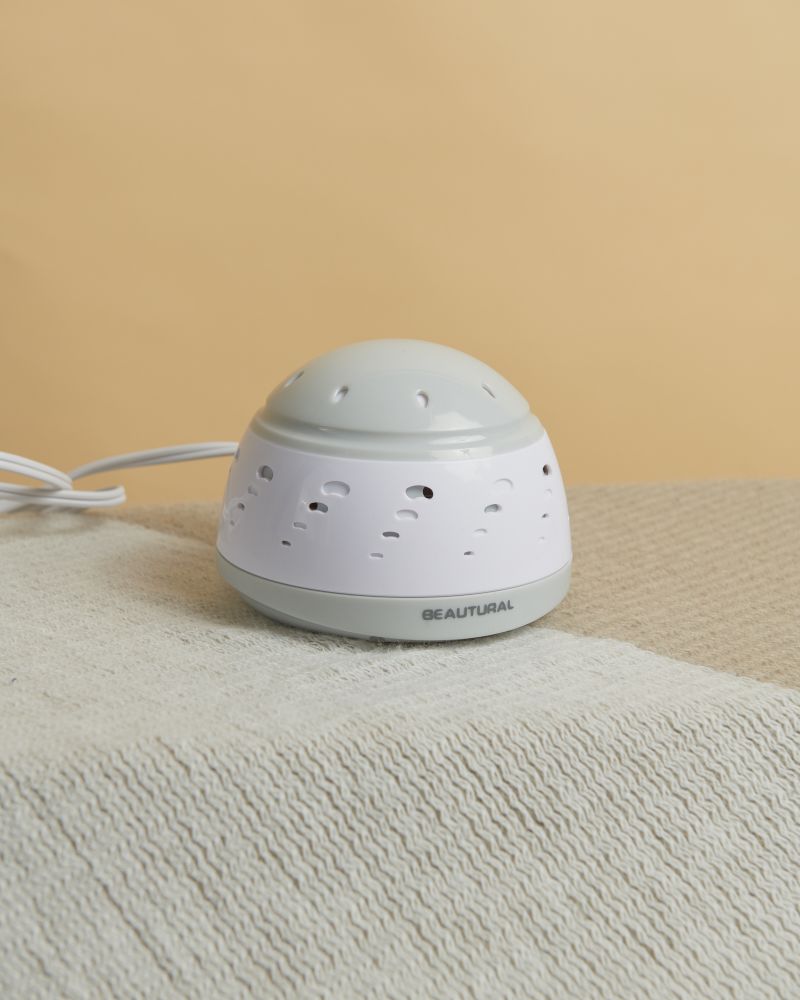
Beautural
I learned that white noise machines are sometimes called “sound conditioners.” First created in the ’60s as an attempt to replicate the ubiquitous humming sound of air conditioners, they were similarly engineered. Like fans, they are spinning machines that don’t release air—only sound. (Although, if you put your hand near, you can feel the air escaping from the tiny holes.)
The thought of a “sound conditioner” soothed me as I imagined gentle sound breezing through my hair, filling the space around me. I could smooth my air, make it softer and tamer, easier to run my thoughts through and around. The name itself, “sound conditioner,” left me feeling content and assured, maybe even sleepy. It reminded me how the original white noise machine, the “SleepMate,” later changed its name to the peaceful “Dohm,” in 2016.

Marpac Dohm
The Dohm and the other sound conditioners pictured on this page can be adjusted by physically rotating the top or the side of the device to change the shape and position of the holes, which allow for more airflow and therefore sound. They’re “mechanical” sound conditioners.
There’s another, newer species of sound conditioners too—the “digital” ones. They aren’t mechanical and whirring but electronic and stationary. They’re like glorified mp3 players with speakers that play pre-recorded lulling tracks.
The digital versions offer many different soundscapes, from fan noises to ocean waves, but there’s a chance you’ll hear the loop when the recording begins again. With the mechanical versions, there is less sound variety, but there’s no manufactured repetition because the sounds are real, generated by the physical motor inside of the device. These types allow the most control and precision, as they invite their owners to gently twist them in order to fine tune the pitch of the sound—changing it from white, to pink, to brown noise, enabling the most personally soothing color or blend.
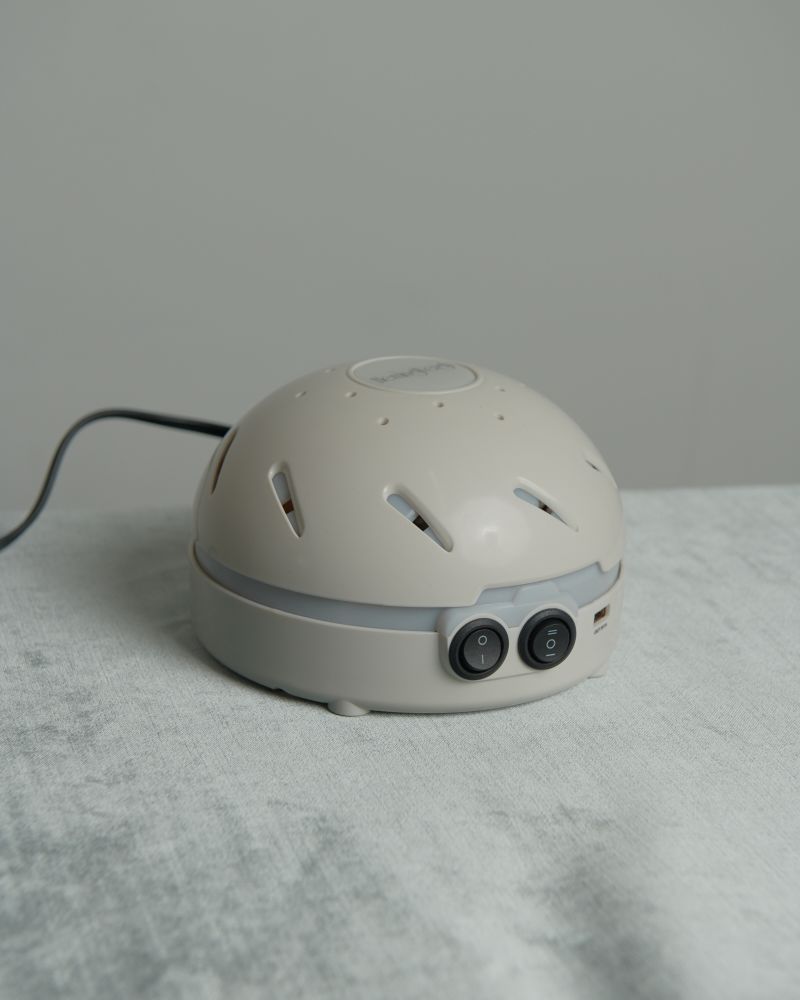
HemingWeigh
Another thing I discovered while scrolling through white noise machines is that sound conditioners have a very peculiar look to them. Most often, they’re white and round with little holes. Some have prominent buttons that look like eyes, especially when there are two of them, and they’re large and placed so perfectly apart that you can’t help picturing a brain, imagining something, behind them.
They’re cute. They’re the kind of cute exhibited by fictional imagined robots like R2D2 from Star Wars or EVE from WALL-E. I couldn’t help but want to care for these adorable, seemingly powerless electronics. They seemed mirrored on babies, with their large eyes gazing outwards, quietly seeking attention and care.
Because their primary function is auditory, I wondered about their recurring visual anthropomorphic qualities. Why are sound conditioners so visually charming? What’s the connection between cuteness and white noise? And while we’re at it, is possible to get addicted to white noise?
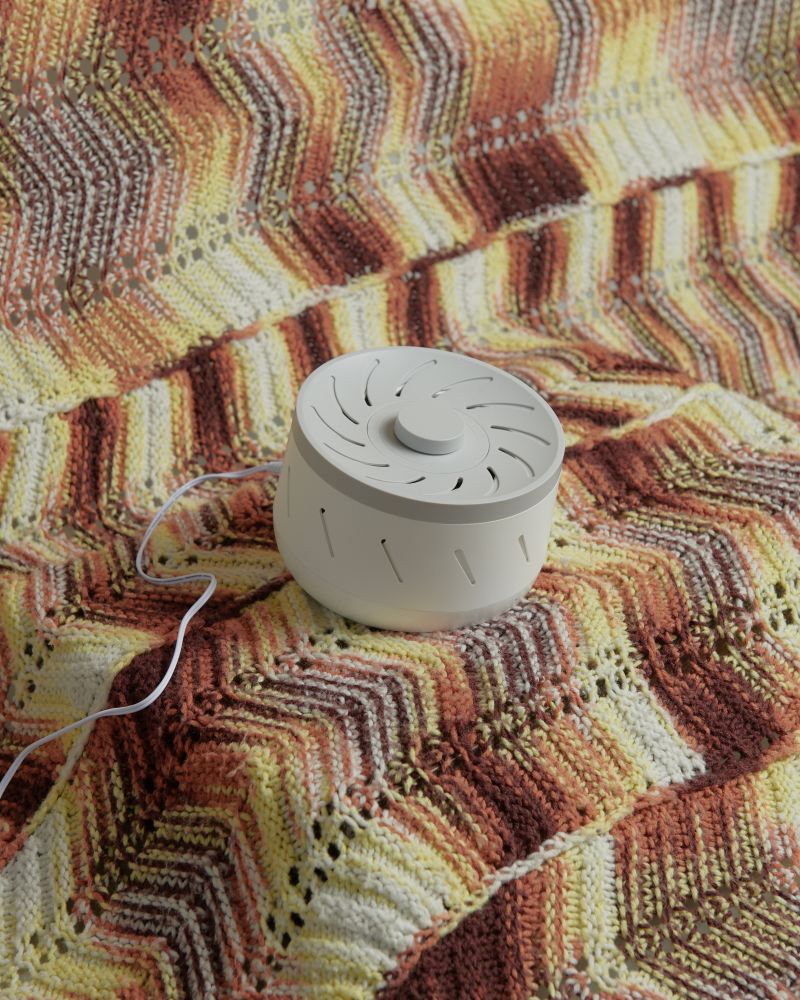
PICTEK
Stepping back, white noise is sound “containing many frequencies with equal intensities,” as defined by the Oxford English Dictionary. The adjective, white, comes from how we describe different kinds of light—“white light” is an even distribution of all wavelengths of light within a normal human’s range of vision. And “white noise,” similarly, is an even distribution of all frequencies of sound within a normal human’s range of hearing.
As children, many of us held up a conch shell to our ear and heard the sound of the “ocean it came from.” This is one example of naturally occurring white noise. A physical acoustician would call such a seashell a “resonant cavity,” meaning any object or environment which focuses and amplifies ambient noise. You can hear other oceans in something as common as a drinking glass, or even just cupping your hand and holding it to your ear.
The human womb is another resonant cavity. While they might not know why, when parents “shhhhh…” their newborns, they’re recreating the very first sounds humans ever hear—the white noise inside the womb. Surprisingly, life inside the womb is much louder than life outside, which is one reason why newborn babies cry. They prefer the enveloping, evenness of white noise to life’s relative silence punctuated by uneven, random cacophonies.
But naturally occurring white noise is no good when you’re in need of white noise to do its important task of masking out other noises. Sometimes a seashell just won’t do. Sometimes you don’t want to use a fan only for its sound. So you find yourself online, scrolling through image grids of cute white noise machines, trying to choose one. You wonder about each machine’s special innate powers as if they were Pokémon.
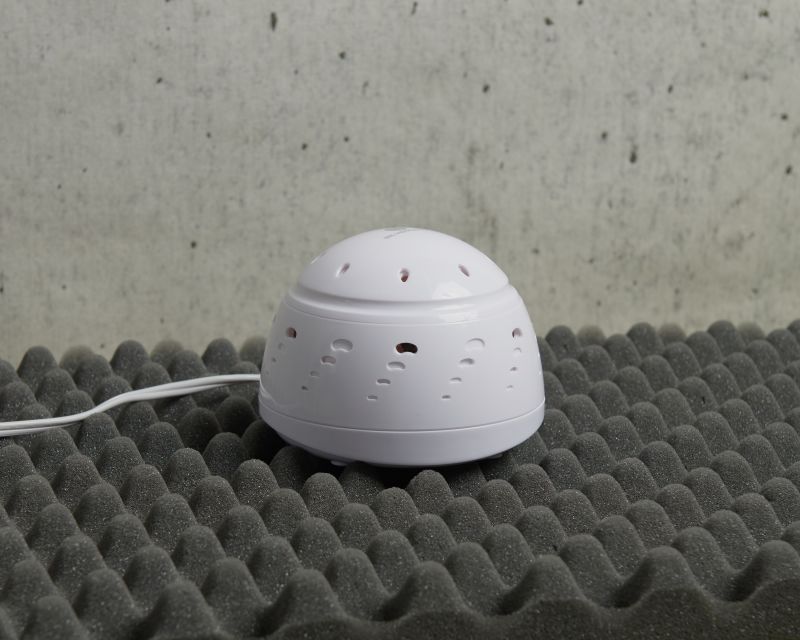
SilverOnyx
In her book, Our Aesthetic Categories: Zany, Cute, Interesting (2012), American cultural theorist Sianne Ngai describes how cuteness is in our commodities has close ties to the pleasures of domesticity. “Cute objects invite physical touch,” she says. This is especially functional in the case of the mechanical sound conditioners, I realized, since they must be physically twisted by human hands to alter their pitch.
Ngai’s description, of how cute objects in our homes inspire us to alter our own behavior, made me think about the word “condition,” which is the root word of conditioner. I thought about other conditioners and how and what they condition: air conditioners chill the air and hair conditioners smooth flyaway hairs. And by their core function, sound conditioners calm the environment around us, blanketing individual, distinct noises with an even, heavy hum. In considering their charming qualities, I began to wonder further: Is it possible that in addition to conditioning the sound around us, white noise machines are conditioning us, too?
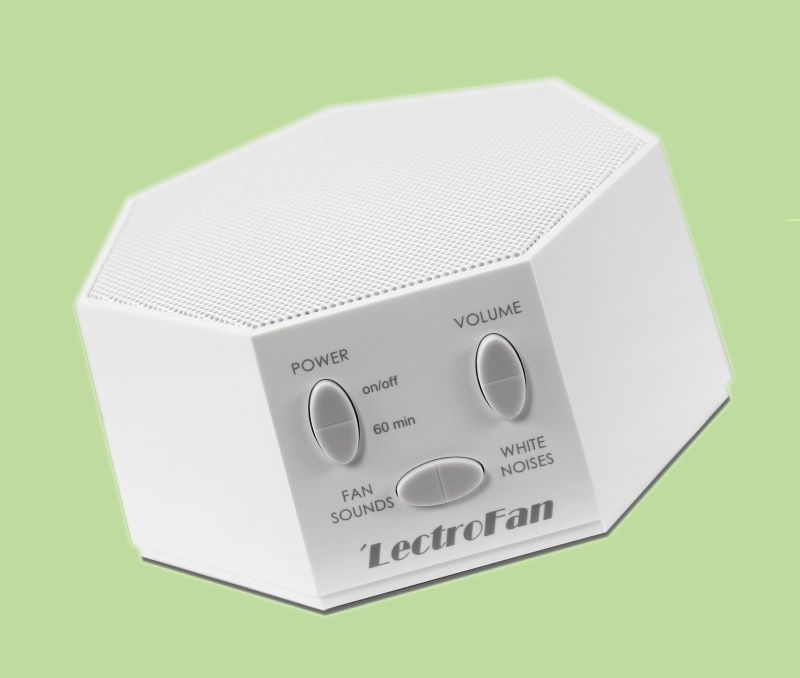
LectroFan
After some deliberation, I purchased a sound conditioner. I chose the “LectroFan,” which actually has not been pictured on this page yet, as it’s one of the digital varieties. I liked its compact, travel-friendly nature; it’s considerably smaller than the others. Some companies even provide a travel case (as seen in this video) allowing for easy companionship.
Like many people, I originally sought out a white noise machine because I was having trouble falling asleep at night. Blocking out regular city noise was one goal, but another, that I only realized later, was creating rituals to encourage my sleep, which are especially necessary amidst our nonstop internet-connected world.
In the pursuit of sleep, I didn’t mind being conditioned like a pet—like Pavlov’s dog who is trained to expect food when it hears a bell ring, or like a goldfish who swims over to the side of the tank when it hears a human tapping before feeding. I was training myself to get sleepy when I heard white noise emanating from a special creature of my choosing.
Sound conditioners soothe the cacophony of any living environment into one great, enveloping sound. This sound is innately pleasing to us. It’s primordial. It pacifies us and lulls us to sleep. Someone once told me the one weird trick to falling asleep is letting everything go—becoming powerless, like a baby. But how does one choose to become powerless? Maybe by taking cues from a cute white noise machine; with its big, unblinking eyes, its whirring brain, and its sweet, rounded air holes that endear us to hold it close, or even pet it.
Usually, my little LectroFan calmly rests near my bed on my bookshelf, on a shelf unto its own. Sometimes I imagine it’s lonely there. And when I don’t bring it with me on trips, I admit having trouble falling asleep. I specifically miss its fan #8, emanating from its hexagonal head, the sweetest sound in the entire universe.
Special thanks to Meg Miller, Toby Shorin, and Dan Brewster for offering insight on drafts of this piece.

